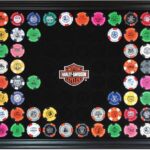I. Understanding Recycling: Definition and Benefits
II. The Concept of Upcycling: Transforming Waste into Value
III. Key Differences Between Recycling and Upcycling
Understanding Recycling: Definition and Benefits
Hey there, eco-warrior! Have you ever stopped to think about what happens to that empty plastic bottle or the cardboard box from your latest online shopping spree? Well, let’s dive into the world of recycling—a simple yet powerful way to give these items a second life!
What is Recycling?
At its core, recycling is the process of converting waste materials into new products. This not only helps to reduce the amount of waste sent to landfills but also conserves natural resources, saves energy, and minimizes pollution. It’s like giving Mother Earth a big hug!
Why Should You Care?
So, why is recycling such a hot topic these days? Here are some benefits that might just get you inspired:
- Resource Conservation: Recycling helps to conserve valuable natural resources like timber, water, and minerals. By using recycled materials, we can reduce the need to extract and harvest new resources.
- Energy Savings: Did you know recycling often uses less energy compared to making products from raw materials? For instance, recycling aluminum saves about 90% of the energy needed to create new aluminum from bauxite.
- Reducing Landfill Waste: Every item you recycle is one less piece of trash in a landfill. This can help extend the lifespan of existing landfills and reduce the need for new ones.
- Pollution Reduction: Recycling lowers greenhouse gas emissions, which contribute to climate change. It also reduces air and water pollution, making our planet a cleaner place to live.
- Economic Benefits: The recycling industry creates jobs and stimulates the economy. It’s a win-win for everyone!
How Does Recycling Work?
Now that you’re sold on why recycling is important, let’s talk about how it works! When you toss an item into the recycling bin, here’s what generally happens:
- Collection: Your curbside recycling program or local recycling center collects the materials.
- Sorting: At a facility, items are sorted into different categories, such as paper, plastics, metals, and glass.
- Processing: The sorted materials are processed—cleaned, shredded, and transformed into raw materials.
- Manufacturing: These raw materials are then used to create new products.
- Buying Recycled Products: Finally, when you buy products made from recycled materials, you close the loop!
Getting Started with Recycling
If you’re new to recycling, don’t worry! Here are some easy tips to help you get started:
- Check your local recycling guidelines to know what can and cannot be recycled in your area.
- Rinse out containers to keep them clean and free of food residue.
- Keep a separate bin in your home for recyclables to make it easy to sort and transport.
- Educate your friends and family about the benefits of recycling—knowledge is power!
Recycling is a fantastic way to contribute to a healthier planet, and every little bit counts! So, the next time you finish a drink or unwrap a package, remember that you have the power to make a difference. Happy recycling!
The Concept of Upcycling: Transforming Waste into Value
Have you ever looked at something you were about to throw away and thought, “I could do something amazing with that”? If so, you’re already tapping into the exciting world of upcycling! This creative practice takes discarded items that would typically end up in landfills and transforms them into something new and valuable. Let’s dive into this innovative approach that not only helps the environment but also sparks creativity!
What is Upcycling?
Upcycling is the art of giving new life to old items. Unlike recycling, which generally breaks materials down to create something new, upcycling focuses on reusing items in their current form with minimal processing. This means you can turn that old wooden ladder into a unique bookshelf or transform glass jars into decorative candle holders.
Why Upcycle?
There are plenty of reasons to embrace upcycling, and they go beyond just reducing waste. Here are some key benefits:
- Creativity Unleashed: Upcycling encourages you to think outside the box. You can let your imagination run wild and create something completely personalized.
- Eco-Friendly: By upcycling, you’re reducing the demand for new products, which means less waste and fewer resources used in manufacturing.
- Cost-Effective: Upcycling often means you can create something beautiful for little to no cost, using items you already have at home.
- Unique Aesthetic: Upcycled items often have a charm and character that new products lack. They tell a story and can add a personal touch to your space.
Getting Started with Upcycling
If you’re new to upcycling and don’t know where to start, don’t worry! Here are some simple tips to get your creative juices flowing:
- Assess Your Space: Look around your home for items that you no longer use. Old furniture, clothes, and even kitchenware can be perfect candidates for upcycling.
- Gather Inspiration: Check out social media platforms like Pinterest or Instagram. There, you’ll find countless ideas and tutorials to guide you.
- Start Small: Don’t feel pressured to take on a big project right away. Try starting with something simple, such as painting an old picture frame or repurposing a tin can.
- Have Fun: Upcycling is all about creativity and expression, so enjoy the process! Don’t worry if your project doesn’t turn out perfectly; it’s the effort and the experience that counts.
Final Thoughts
Upcycling is a fantastic way to breathe new life into everyday items while minimizing waste and making a unique statement. Whether you’re crafting for fun or looking to spruce up your home, this creative practice can be both rewarding and enjoyable. So, grab that old item you were about to toss and start imagining the possibilities—your next masterpiece awaits!
Key Differences Between Recycling and Upcycling
When it comes to sustainability, recycling and upcycling are two terms that often pop up, but they are not interchangeable! In fact, they represent different approaches to handling waste, each with its unique benefits and processes. Let’s dive into their differences in a friendly and easy-to-understand way.
1. The Process
First up, let’s talk about the processes involved:
- Recycling: This is the process of breaking down materials and reconstituting them to create new products. Think of it like a factory reset for items like plastic bottles or aluminum cans. They are collected, cleaned, and then processed into raw materials. For example, recycled paper is turned back into pulp before being transformed into new paper products.
- Upcycling: On the other hand, upcycling is about creativity! It involves taking old or discarded items and transforming them into something new and valuable without breaking them down completely. For instance, turning an old wooden ladder into a plant stand or transforming glass jars into beautiful candle holders. It’s all about giving new life to things that might otherwise end up in the landfill.
2. The End Product
The end result of recycling and upcycling can differ significantly:
- Recycling: The products born from recycling often resemble their original form. You might have a new can made from recycled aluminum or paper products, but they still have a functional link to what they once were. The goal is to keep materials in circulation, but the resulting products may not always have the same unique charm.
- Upcycling: In contrast, upcycled items often boast a unique flair and individuality. Because upcycling emphasizes creativity, the final product can be anything from trendy furniture to art pieces. The beauty of upcycling lies in its potential for personalization and artistic expression!
3. Environmental Impact
Both recycling and upcycling contribute positively to the environment, but they do so in different ways:
- Recycling: This process helps reduce landfill waste and conserves natural resources by preventing the need for raw materials. It plays a critical role in the circular economy, where materials are reused and recycled perpetually.
- Upcycling: While upcycling also reduces waste, it often encourages a mindset of sustainability and resourcefulness. By creatively reimagining what we already have, it inspires others to think outside the box and consider how they might repurpose items rather than toss them aside.
4. Accessibility and Skill Levels
Finally, let’s consider accessibility:
- Recycling: This usually requires minimal effort from individuals. Simply sorting items into the right bins and taking them to a recycling center can be enough.
- Upcycling: This often necessitates a bit more creativity and skill; however, it can also be a fun DIY project for anyone willing to try! Whether you’re a crafty person or just starting, there are countless tutorials and ideas available to inspire your next upcycling project.
In short, while recycling and upcycling both serve the essential purpose of reducing waste, they do so through different processes and outcomes. Understanding these distinctions can empower us to make conscious choices that benefit our planet. So, whether you’re recycling that soda can or transforming an old t-shirt into a reusable tote bag, you’re playing a part in a more sustainable future!










Comments